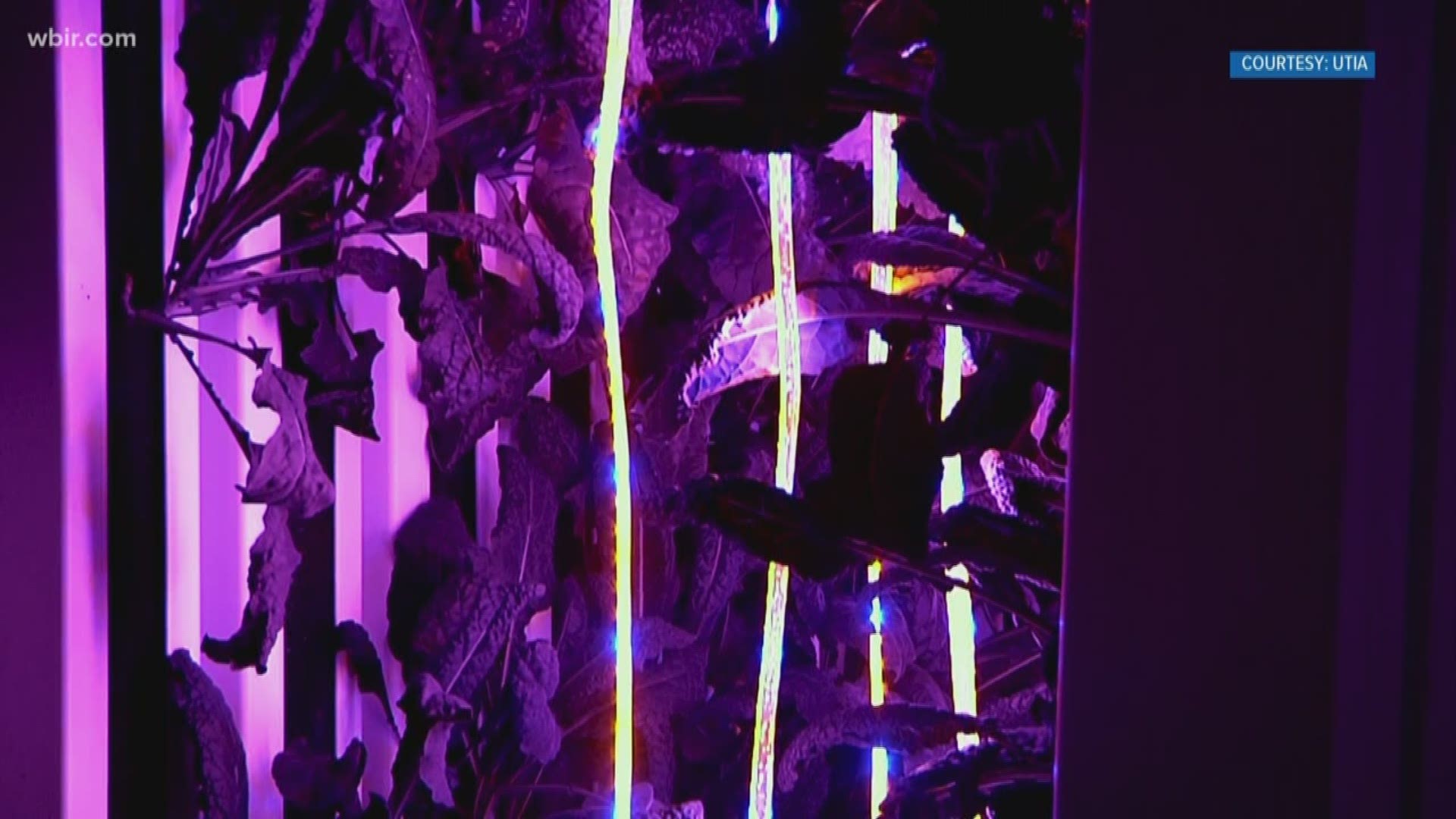KNOXVILLE, Tenn. — No sunlight on this farm. Inside a climate-controlled shipping container at the University of Tennessee, kale grows under red and blue LED lights.
Dubbed 'electric kale,' the high-tech vegetable is part of a two-year study conducted by the University of Tennessee Institute of Agriculture(UTIA), Tennessee Valley Authority (TVA), Knoxville Utilities Board (KUB) and the Electric Power Research Institute (ERPI).
"There's a good chance this could be a major part of agriculture within five to ten years," said Carl Sams, UT Distinguished Professor of Plant Sciences.
Sams said his team is studying multiple factors including whether or not they can tweak the flavor and nutrients of the kale by adjusting the lights and other factors in the highly-controlled environment inside the container called 'The Electric Farm.'
"Photosynthesis is at its max under those two wavelengths, blue and red, because that’s where the plants take the most energy from the sun and convert it to food that we can eat," Sams explains the science behind using the red and blue lights.
Sams said they're also researching how much yield they produce per energy source, a topic that researchers at TVA are highly interested in studying.
"Since they’re in a controlled environment, they can operate no matter what the conditions are. Therefore, TVA has an opportunity to work with potential growers who can stage the time of operation of those facilities to match our load profile to support our generation peaking," explained TVA Senior Project Manager Steve Halcolmb.
The high-tech kale is already benefiting a demographic in the community who needs it most.
Second Harvest Food Bank delivers food to thousands of people in East Tennessee. Several of their recent truckloads have contained the 'electric kale.'
"The seniors we deliver to are not someone who can go out to the grocery store. We try to deliver to homebound seniors, and this is their one opportunity to get fresh food," said Scott Morgan Community Development Director Kathy Carroll.
Sams envisions easier access to fresh produce in the future if indoor farms are built in urban areas and food deserts, eliminating the need to drive truckloads of food across the country from traditional growing locations like California and Mexico.
As they embark on the second year of the study, they'll be able to select a different type of vegetable, other than kale, to grow in the controlled environment.
"There's an educational portion of this project to educate the next generation of growers on how to use these facilities. There's a big need for that right now," Sams said.

